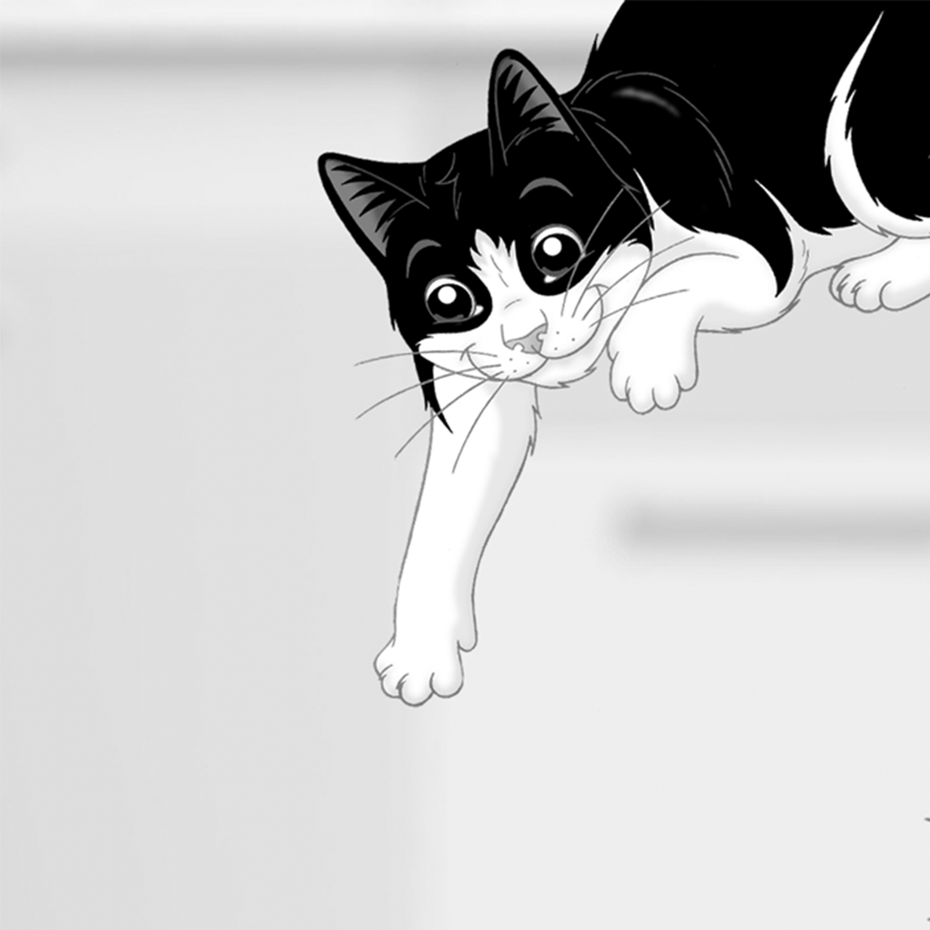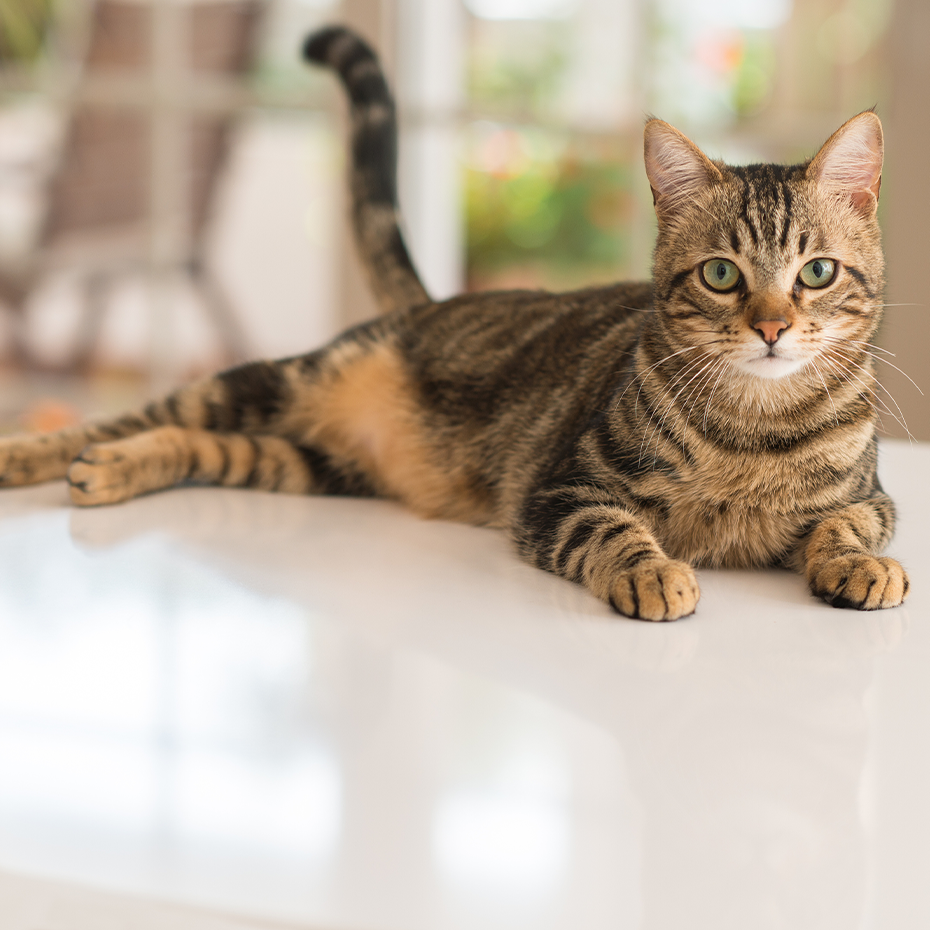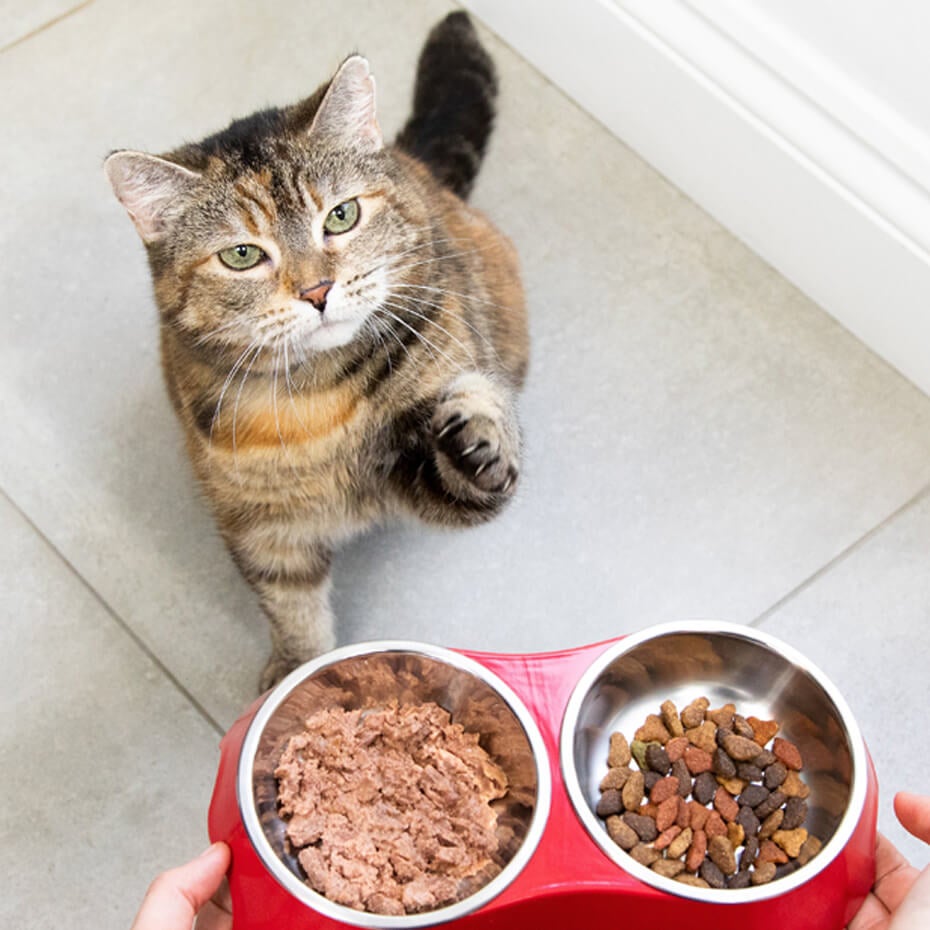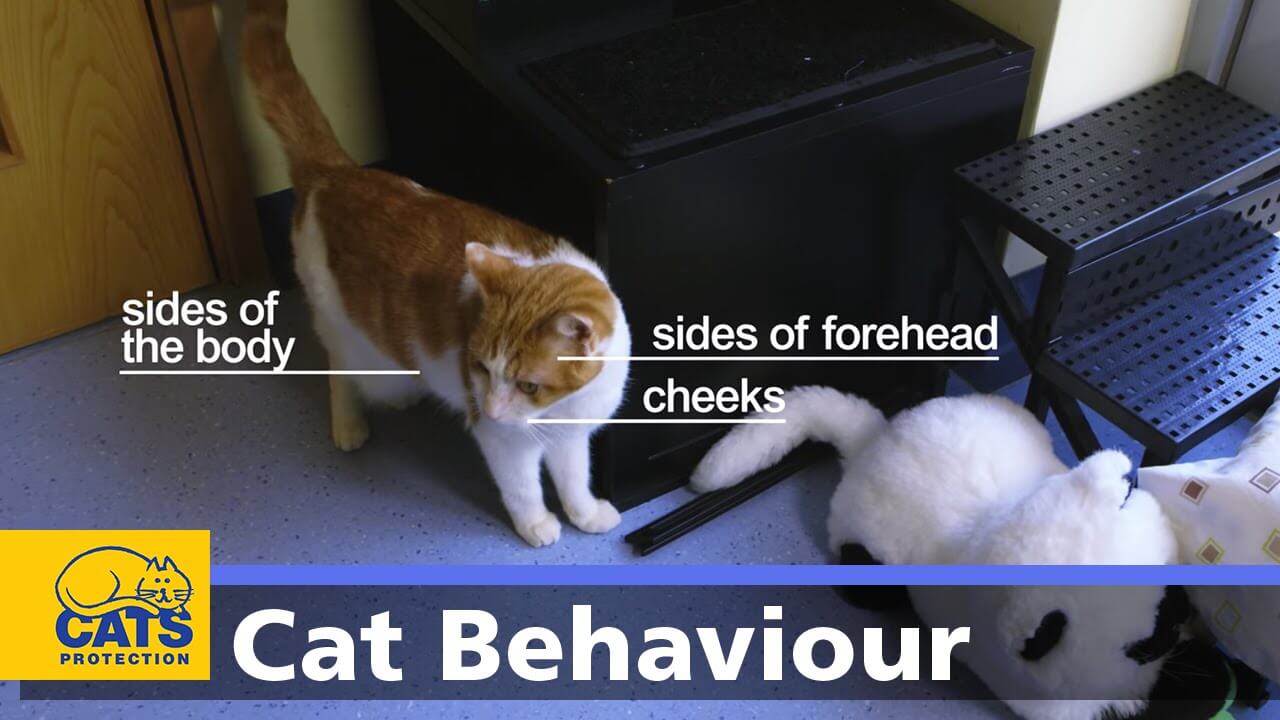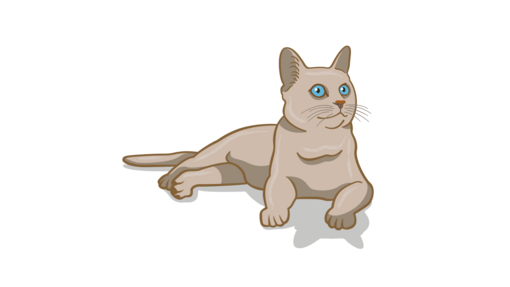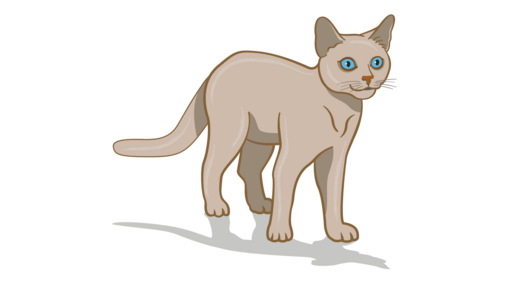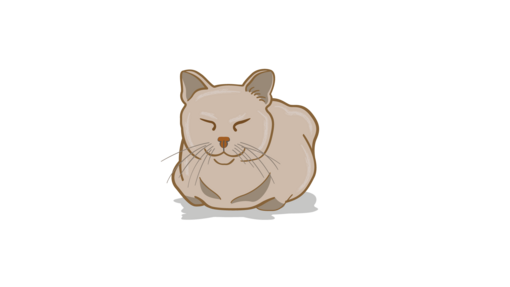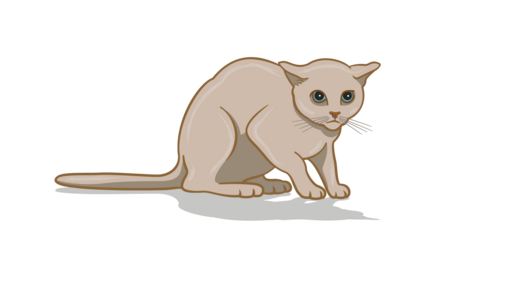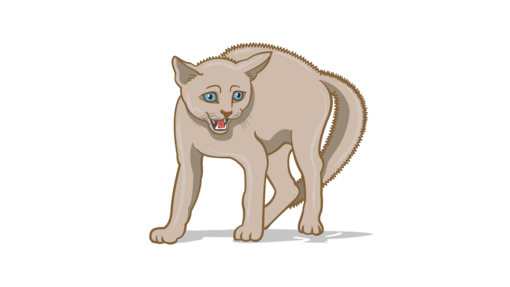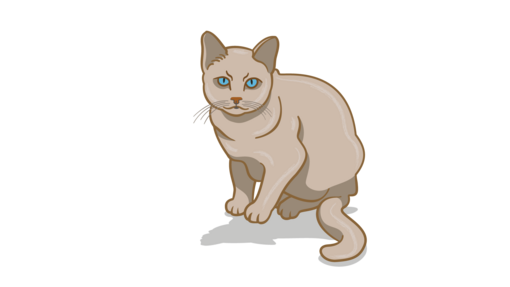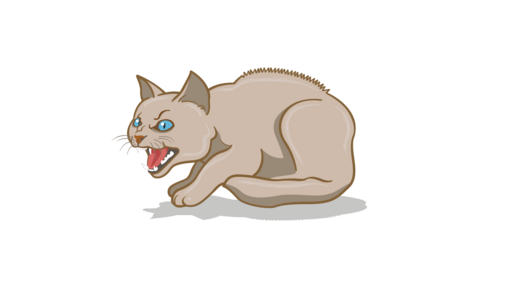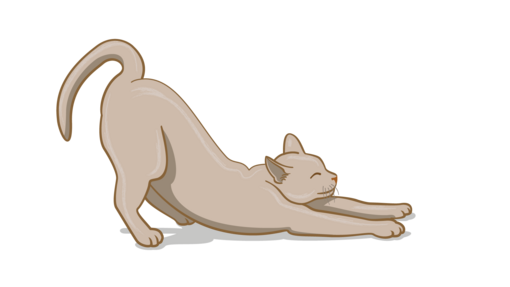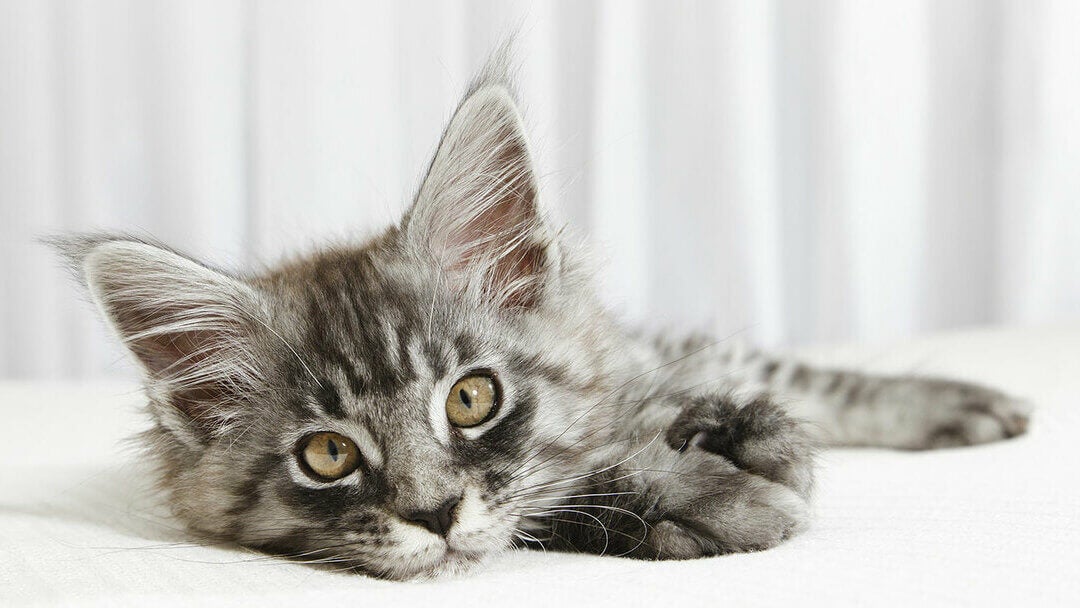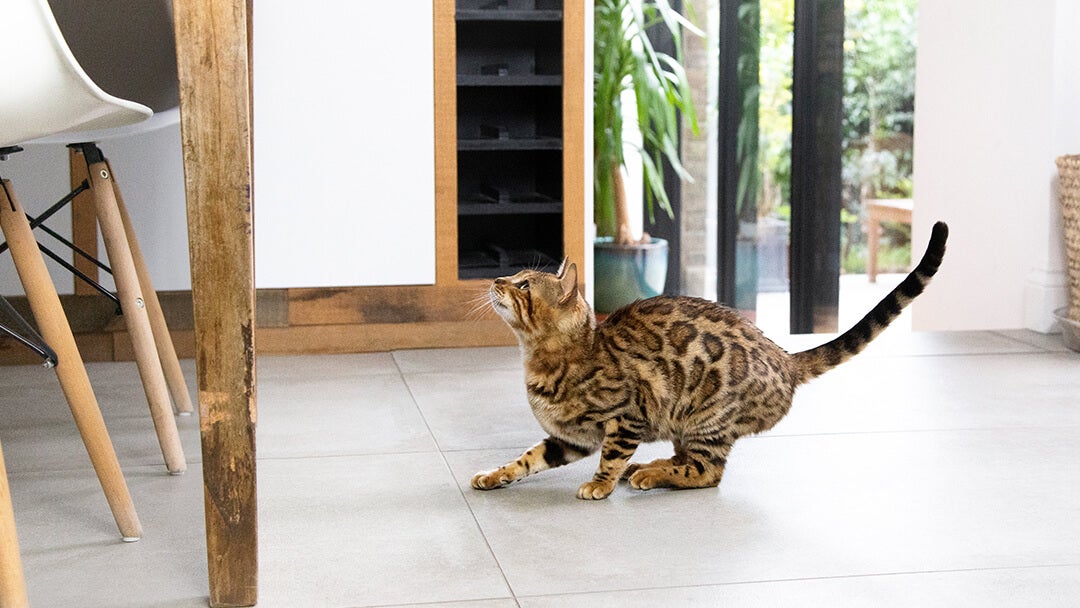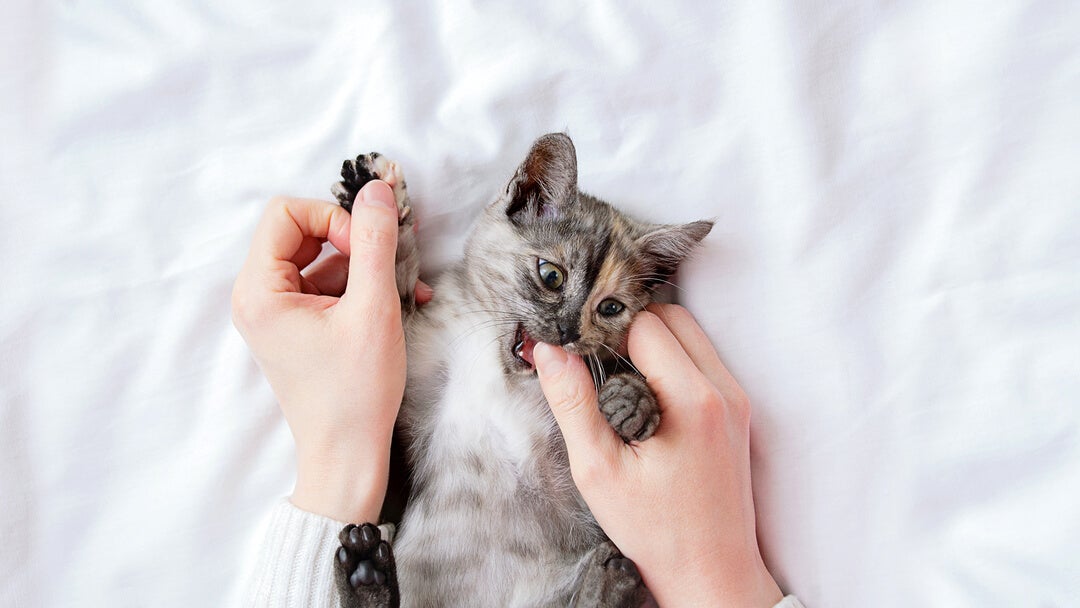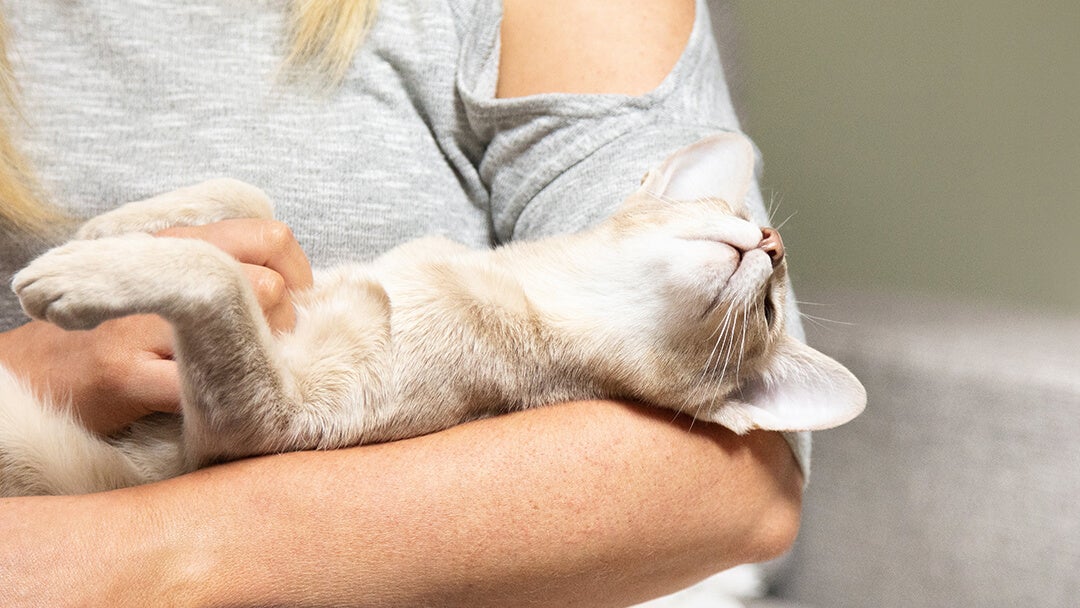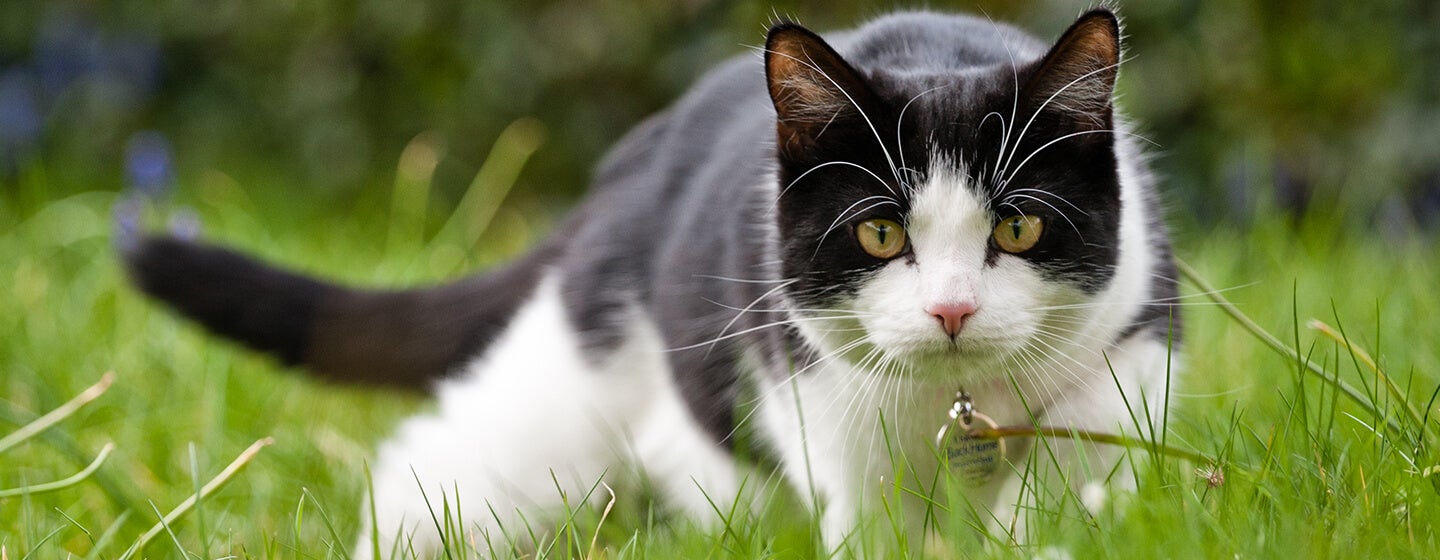
Whether you’re a first time cat owner or have a long term feline friend, there will be times where you wish you could know what your cat is thinking.
Understanding Cats’ Body Language
Sometimes you might wonder about a change in your cat’s behaviour and what that could mean, or would like to know how you can tell if your cat is happy.
Although cats might seem hard to read, there are lots of tell-tale signs that will give you an insight into what your companion is thinking, and what kind of mood they’re in! You’ll probably be able to tell some of your cat’s more obvious moods already from their body language, facial expressions, vocalisations and tail movements. But looking out for some other signals, such as the following cat tail signs and body postures, can tell you even more.
Cats have a wide range of basic emotions – they feel happy, sad, afraid, relieved and even frustrated, just like us humans! The key to a good relationship with your cat is learning how to recognise these emotions, and respond where needed.
Watch this great video guide on cat body language from our friends at Cats Protection, presented by their Cats Behaviour Manager Nicky Trevorrow.
Cat behaviour explained
Once you understand the basics of cat behaviour, you should be able to pick up quickly how your cat is feeling. If you’re looking for cat behaviour explained, our guide should give you everything you need to speak cat!
Neutral (relaxed)
This is how your cat should spend most of their waking hours, and is a vital part of cat language – relaxed, content and comfortable in familiar surroundings. They should look like they’re content to watch the world go by.
Signs of neutral cat behaviour
- If lying down, they could be stretched out, curled up into a ball, or lying on their front with paws neatly tucked underneath them.
- Their eyes might be blinking softly, or half closed.
- Their ears will be relaxed, held casually upright and forward – although they could swivel around independently if your cat is listening to things around them.
- Their whiskers will be relaxed, away from the sides of their face, and they may almost appear to smile!
- Their body is nice and relaxed, with no tension to suggest they might be about to spring into action.
Focused
They may look cute and fluffy, but from birth your cat is designed to be an excellent hunter – they can stalk and catch prey with ease, and are capable of focusing 100% on their target. If your cat is concentrating on a small, moving object, or on something new in their immediate area, you’ll notice that their body language will change as they try to work out how to best respond to it.
Signs of focused cat behaviour
- Their eyes will be open with pupils narrowed.
- Their ears and whiskers will be pricked forward, with their body angled towards the focus of their attention.
- Their body might be low to the ground as they stalk, with hind legs coiled under their body.
- Your cat’s tail language will show focus by being held out low behind them. The end of their tail, along with their hindquarters, might be twitching as they get ready to pounce. This is one of the more obvious cat tail signs to look out for – once you see it, you’ll know they’re hunting!
- If the object of their focus is you, for example if they’re trying to get food or strokes, they might rub against you with tail held in the air, but don’t be fooled – they’re still focused on their end goal!
Happy
A happy cat is easy to recognise – you should be able to pick up their cat body language easily. This is the state you’ll want you cat to be in as much as possible, as it’s the perfect state for quality time between you and your cat.
Signs of happy cat behaviour
- When sitting, your cat will be relaxed and upright, with ears pointed up and forward, but relaxed, sometimes swivelling gently towards familiar sounds like your family’s voices.
- When lying down, they may have their paws tucked neatly underneath them, or be lying stretched out on their side or even on their back, with legs spread outwards, which shows they are very happy!
- They may snooze with their eyes closed or half open, or look heavy-lidded – almost like they are daydreaming at times! If they blink very slowly, try blinking slowly back to show you’re relaxed too – this mimicking behaviour is a great way to bond with your cat.
- Whiskers will be relaxed and their tail still – or held high with a slight curl if they’re standing to say hello to you.
- If you stroke your cat, their eyes may close in contentment and they will gently purr.
Anxious
Cats can be very sensitive, especially to change. It can take some time for cats to settle after unexpected changes, so learning to read the symptoms of anxious cat behaviour can help you help your cat back to a relaxed state. The sooner you recognise this in your cat’s body language, the sooner you can offer a reassuring stroke when they approach you for reassurance, and some attention. Give your cat 2-3 days after any big change to become accustomed to it, and to return to normal.
Signs of anxious cat behaviour
- Your cat's eyes will be open and not blinking, with pupils dilated into an oval or circle.
- Their ears might move from their relaxed forward position to scan for more information, swivelling around independently from each other. If they are very anxious, they may even flatten back to their head.
- Their head will begin to lower, with whiskers pulled back to the side to appear small and non-threatening – or even be swept forward on alert.
- As anxiety increases, your cat might start to cower, or their back might arch to prepare to run.
- Cat tail language is very important here – their tail might be still or moving slowly side to side at the tip, which is a sign of anxiety. If you see this distinctive cat tail sign, make sure to offer some reassurance.
Fearful
Anxious cat behaviour might be subtle, but when your cat is afraid, it should be easier to spot – if they’re scared by something such as loud noises, your cat won’t be reassured by a stroke, and it’s likely that even their favourite treat might not do the trick. Their body language is telling you that they’re frightened, and it will only return to normal when they feel safe. Try not to move quickly to try and comfort them, as you could be seen as another threat. Instead, remove anything that could be causing their fear if you can, and wait for them to calm down. If your cat is showing these signs often, you may want to consult your vet who will be able to refer you to a pet behaviourist.
Symptoms of fearful cat behaviour
- Your cat’s ears will be flattened back against their head, which might be lowered with gaze angled upwards.
- They may run away, or stand or crouch very still if this isn’t possible.
- Their eyes will be open very wide, with pupils fully dilated and whiskers flattened or bristling.
- They may hiss or spit at close threats, growl or strike with claws out.
- Some cats will straighten their front legs to make themselves look taller, or arch their backs and fluff themselves up to look bigger.
- Their tail may be held under their body, or be slashing vigorously from side to side.
Frustrated
Your cat might be actively frustrated at a short-term specific event, like not being able to reach their favourite toy, or be affected by longer-term, more depressive frustration at a lack of stimulation, such as not being able to express their need to hunt.
Cats with longer-term frustration can often be misinterpreted, so if you think that your cat might be experiencing this, it’s important to talk it through with your vet so that you’re able to help return them to a happier state of mind.
Symptoms of frustrated cat behaviour
- An actively frustrated cat usually focuses intently on their object of frustration, and will try everything they can do to get what they want!
- All their senses are tuned onto their goal – eyes will be wide open with pupils dilated, ears forward, and whiskers forward-pointing and spread.
- They may pace impatiently if they can’t get to what they want.
- Cats can’t maintain this frustration forever, so if they can’t get what they want, they will either give up, or in some cases enter into a longer-term frustration or even depression, depending on the source of their frustration.
- Cats with longer-term depression may often be lethargic, off their food and won’t want to play or interact with others.
Angry
If your cat displays angry behaviour, you’ll need to tread very carefully. Always avoid provoking an angry cat - don't stare or shout at them, or make sudden movements, and avoid trying to touch or comfort them as they may interpret this as an added threat and lash out. Instead, retreat slowly, remove any threats if it's safe to do so and give your cat time and space to calm down.
If your cat is displaying body language signs that they are angry on a regular basis, you may wish to seek the help of your vet or an animal behaviourist who can help you fully understand the cause of such negative cat body language.
Symptoms of angry cat behaviour
- An angry cat will be rigid, with tail held out stiff and straight or curled around and under their body.
- They will act very differently from usual – they could be silent, hissing, spitting or growling.
- They will try to look large and threatening, with fur erect, stiff front legs, or crouching in a threatening manner.
- Their ears will be tense, and flat back against their head, and whiskers will be stiff away from their face.
- Their eyes will be hard and focussed. Their pupils may be narrowed, although some cats might have round, unblinking eyes.
Relieved
When an angry, scared or frustrated cat feels reassured that the perceived threat has gone, they will likely start to act relieved. Just as it’s important that you recognise when they are feeling angry or frightened, learning to tell when your cat is relieved is key to helping them feel like their normal, relaxed selves again.
Symptoms of relieved cat behaviour
- A cat’s whole body can show relief – some cats even make a full-body stretch to release tension!
- Their eyes, ears, head, body and tail will all visibly relax.
- Whiskers will return to a calm, position away from the face, and their head will lower.
- Some may yawn, turn away and half-close their eyes, or even have a good wash.
When you understand how your cat is feeling you can better respond to their needs and behaviours. Although a lot of it is instinctive – hissing is a clear sign of anger even to someone who isn’t a cat owner – other signs are more subtle. Use the above guide can help your identify how your cat is feeling, and enjoy a closer relationship than ever.
